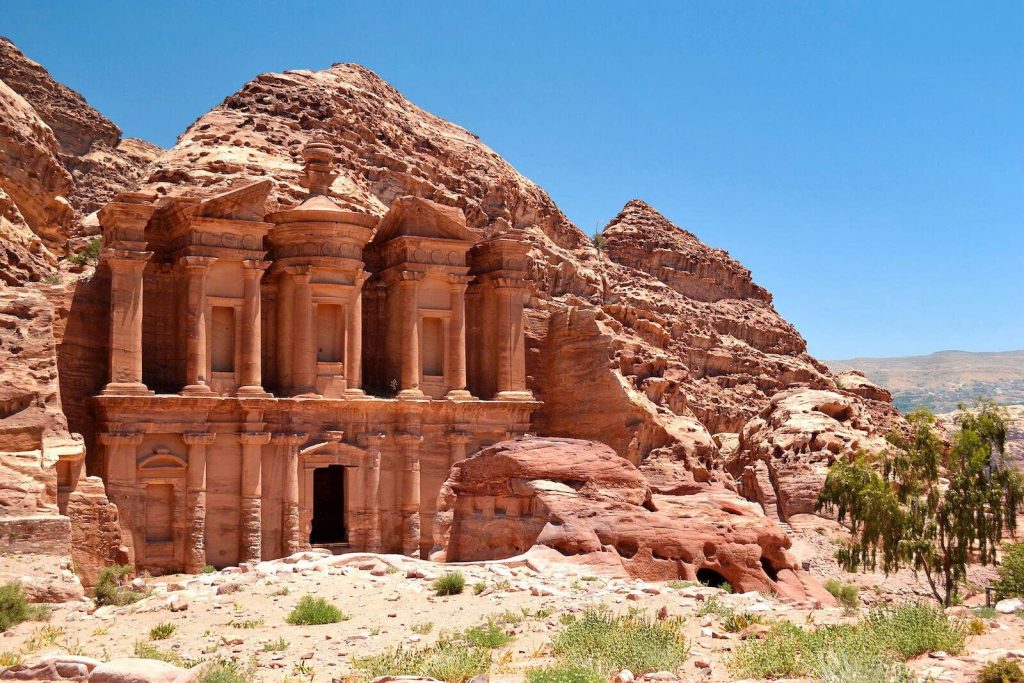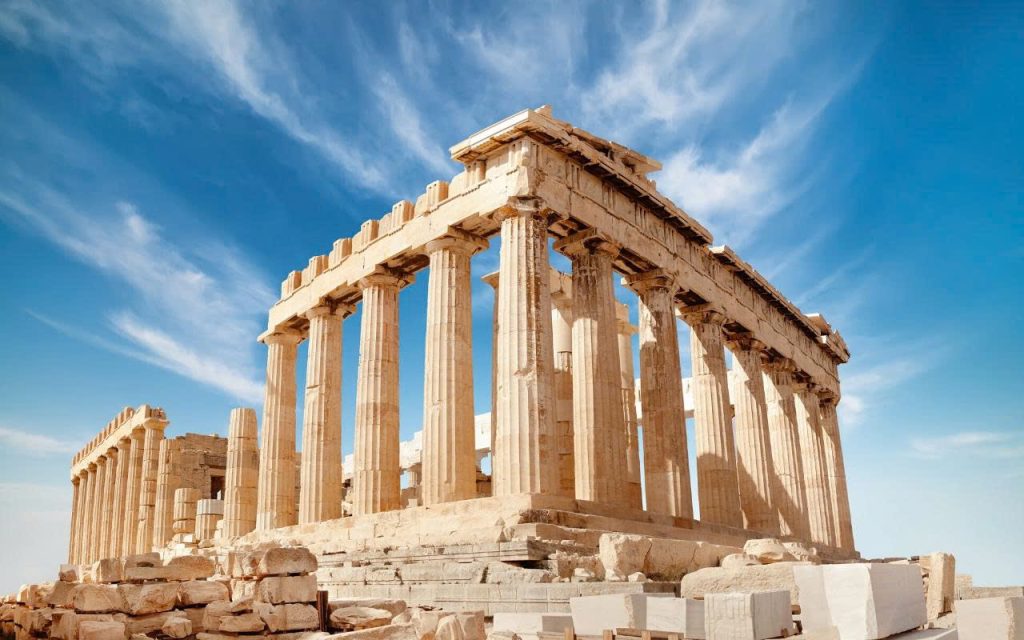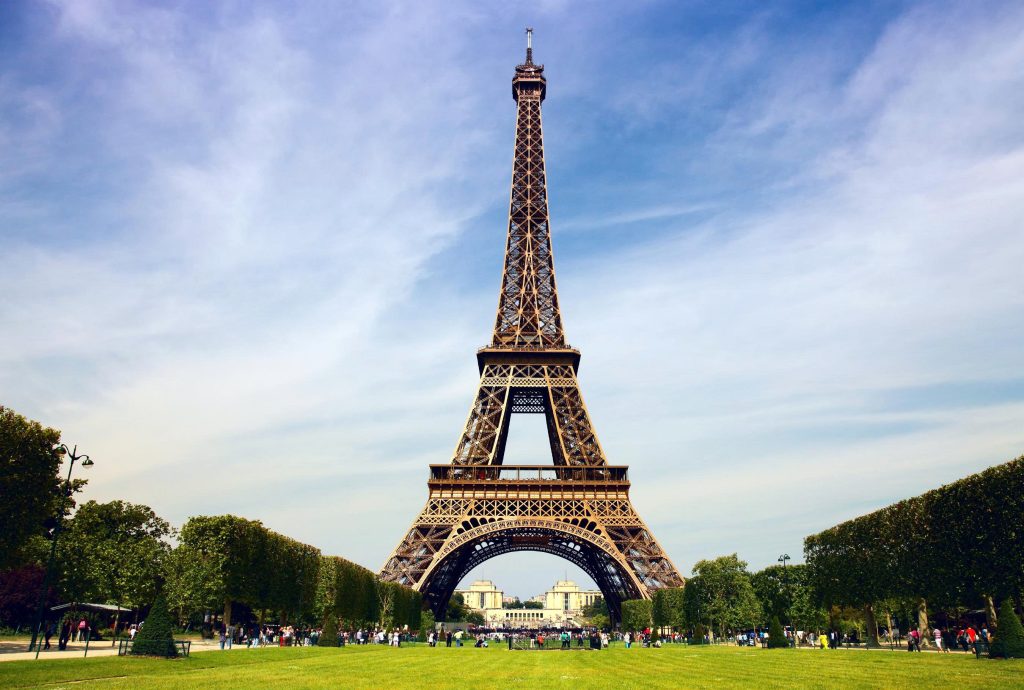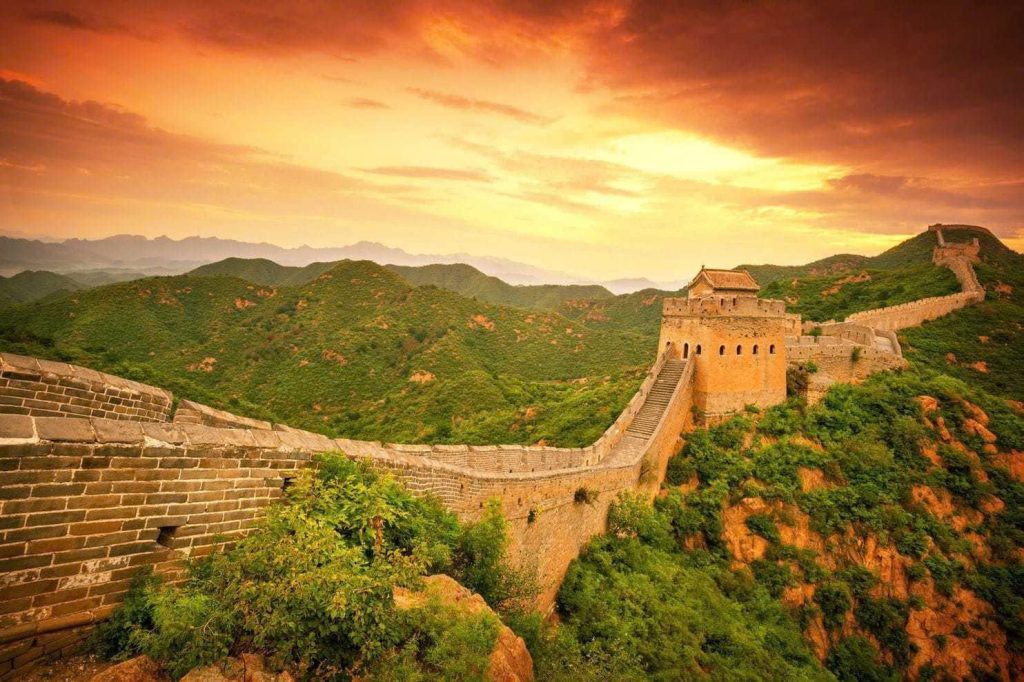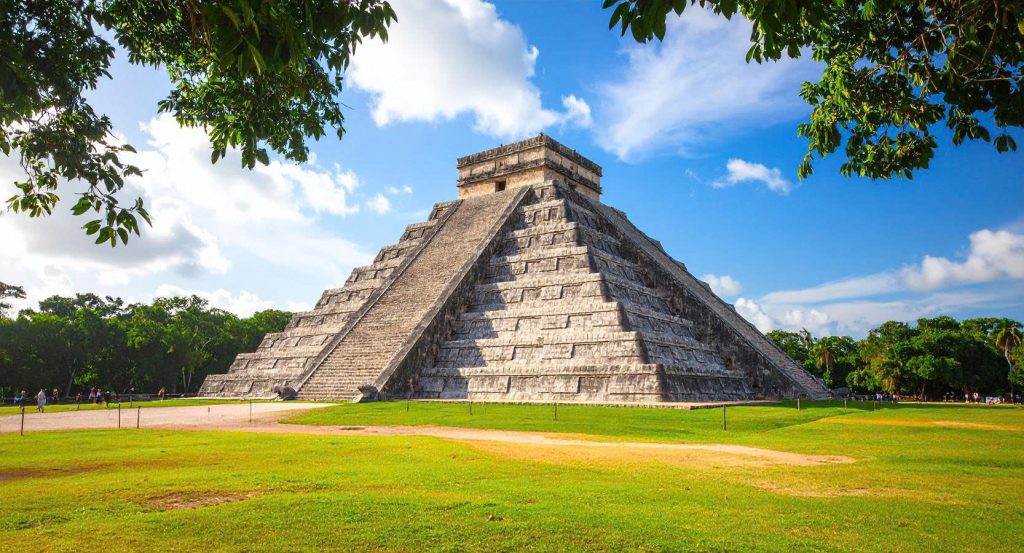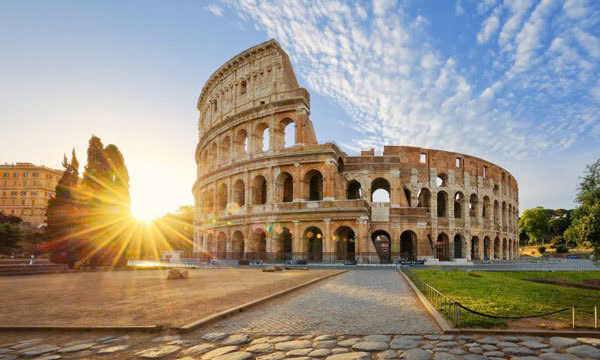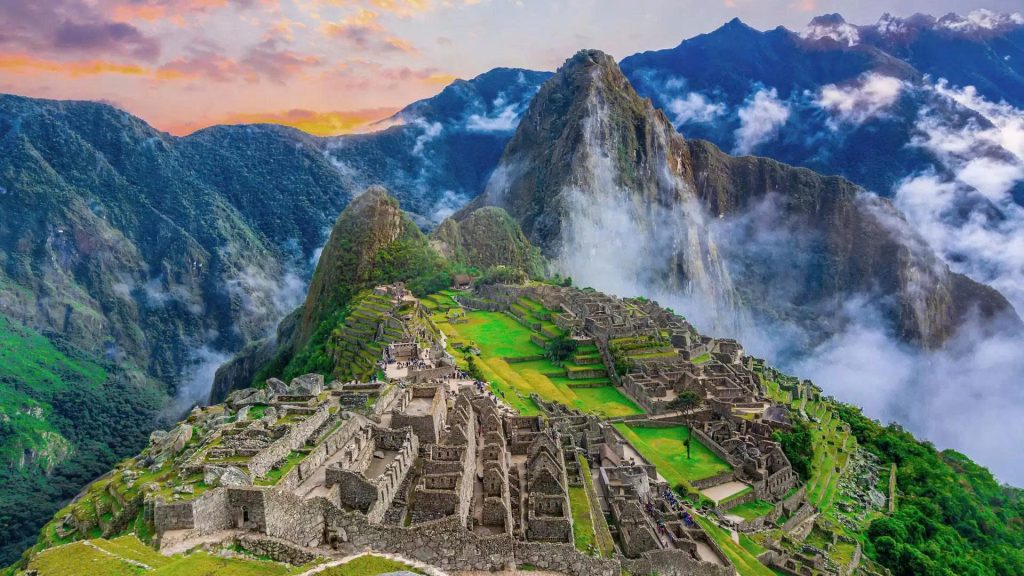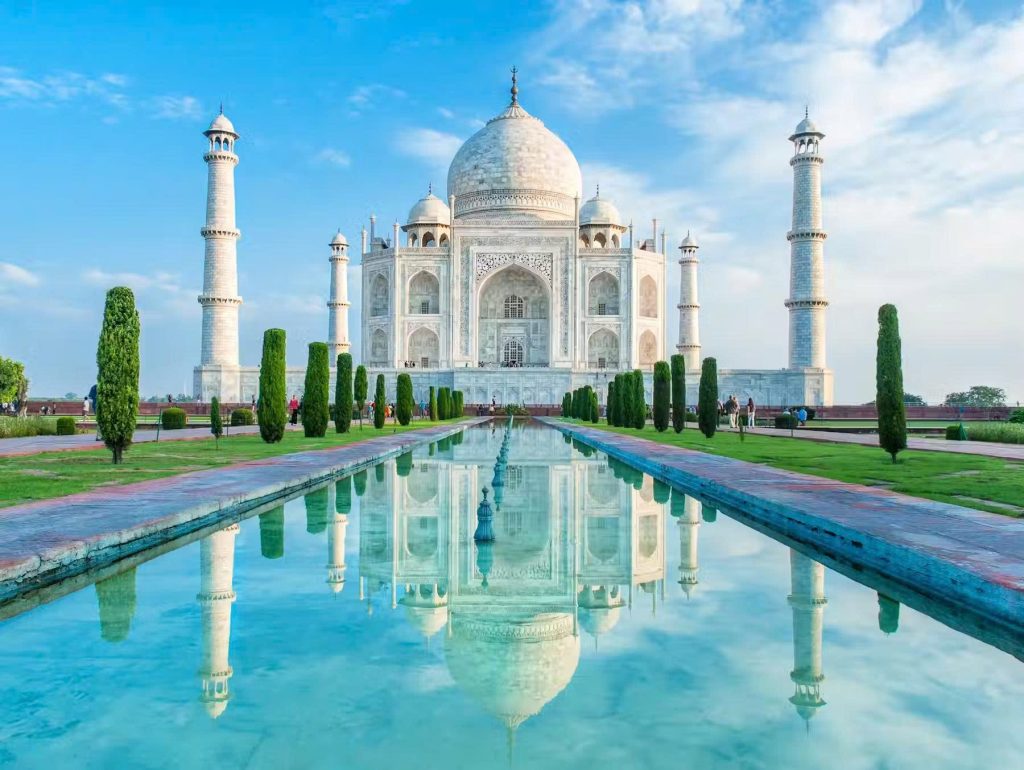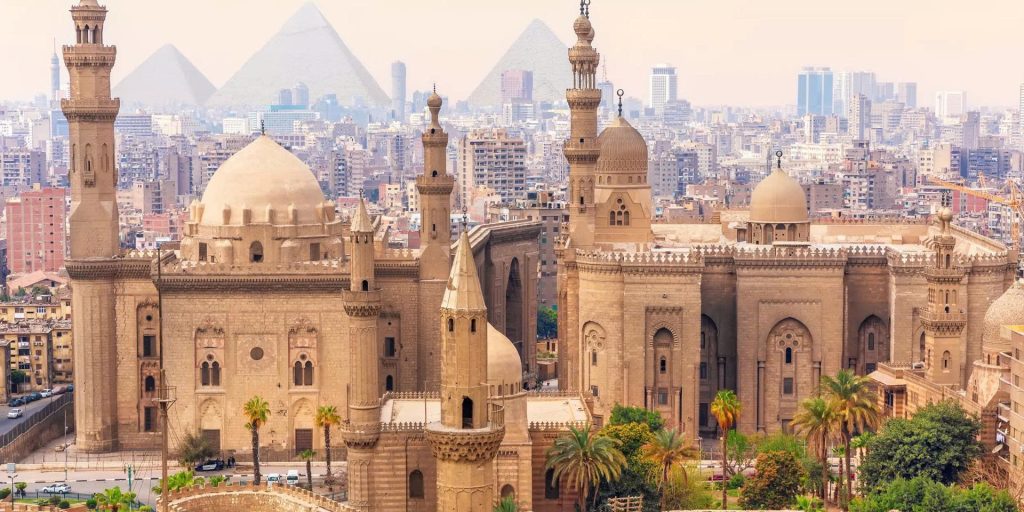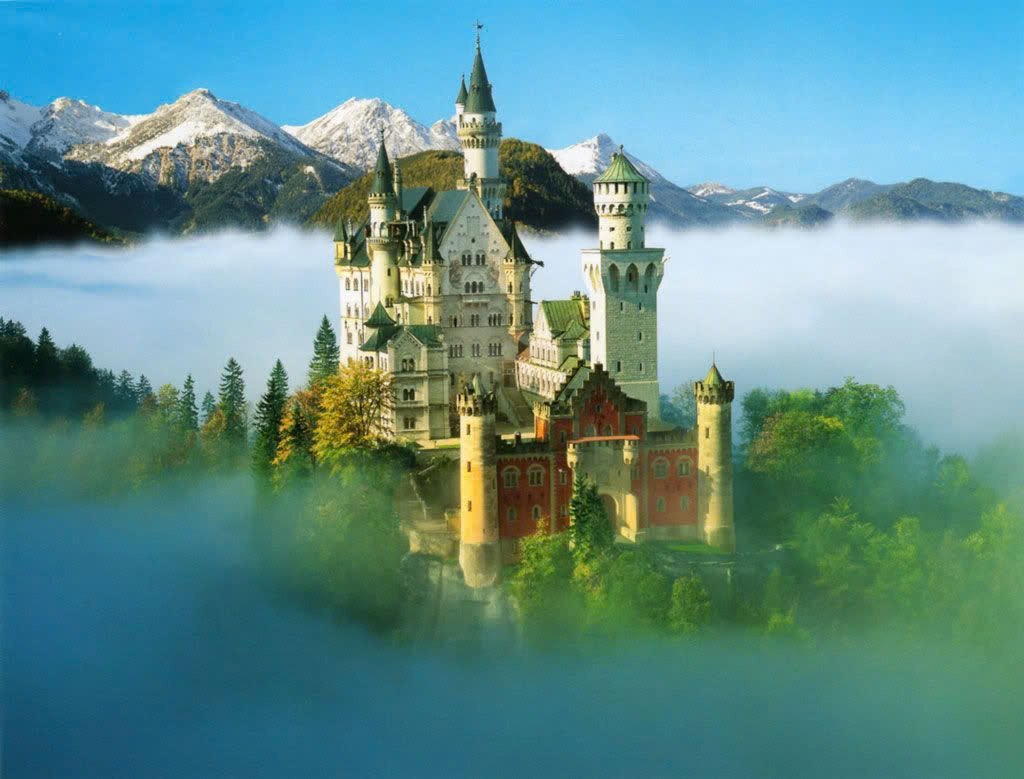Petra, Jordan, often referred to as the Rose City due to the mesmerizing color of the sandstone from which it is carved, is much more than an ancient ruin—it is the enduring masterpiece of the Nabataean Kingdom. Concealed for centuries within a massive natural gorge, this UNESCO World Heritage Site stands as the ultimate symbol of human ingenuity, combining intricate artistry with masterful hydraulic engineering.
Built from the 4th century BC as the capital of the Nabataean trading empire, Petra commanded key ancient trade routes, allowing it to flourish before being abandoned around the 7th century AD. The iconic structures, most famously Al-Khazneh (The Treasury) and Ad Deir (The Monastery), reveal a civilization deeply connected to both commerce and the cosmos.
1. Petra Essentials: History, Significance, and Icons
The Nabataean Kingdom: Masters of the Desert
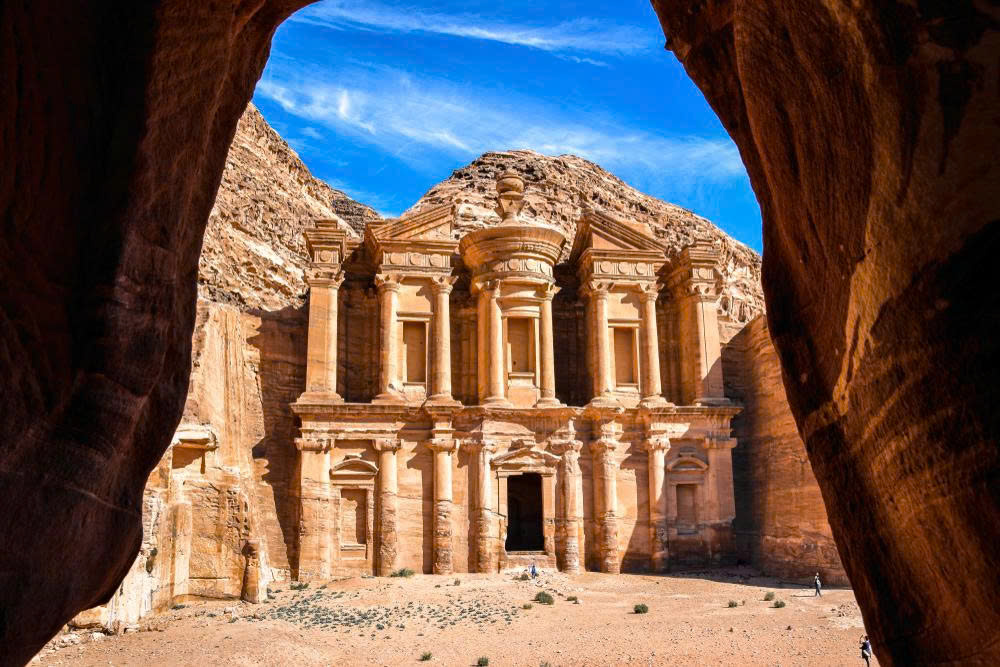
Understanding the creators of Petra is essential to appreciating its genius. The Nabataeans were not a sedentary tribe; they were powerful nomadic Arabs who developed a sophisticated state based entirely on controlling the lucrative trade routes connecting the Mediterranean with Arabia and the East.
- The Genius of Water Management
Petra’s survival in the harsh desert environment was a testament to the Nabataean’s unparalleled hydraulic engineering. They developed an ingenious network of cisterns, dams, and ceramic pipelines to capture and distribute every drop of precious rainwater, turning their desert fortress into a habitable, thriving capital. This mastery of water was their ultimate defense and economic power.
- The Name: Petra and the Rose City
The name Petra is derived from the Greek word meaning “stone,” a fitting tribute to its rock-cut nature. The famed moniker, the “Rose-Red City,” stems from the specific hue of the sandstone, which changes dramatically from gold to deep rose and purple depending on the time of day and the sun’s angle.
Location and Geology: The Natural Fortress
Petra’s geographical setting was key to its success and its disappearance.
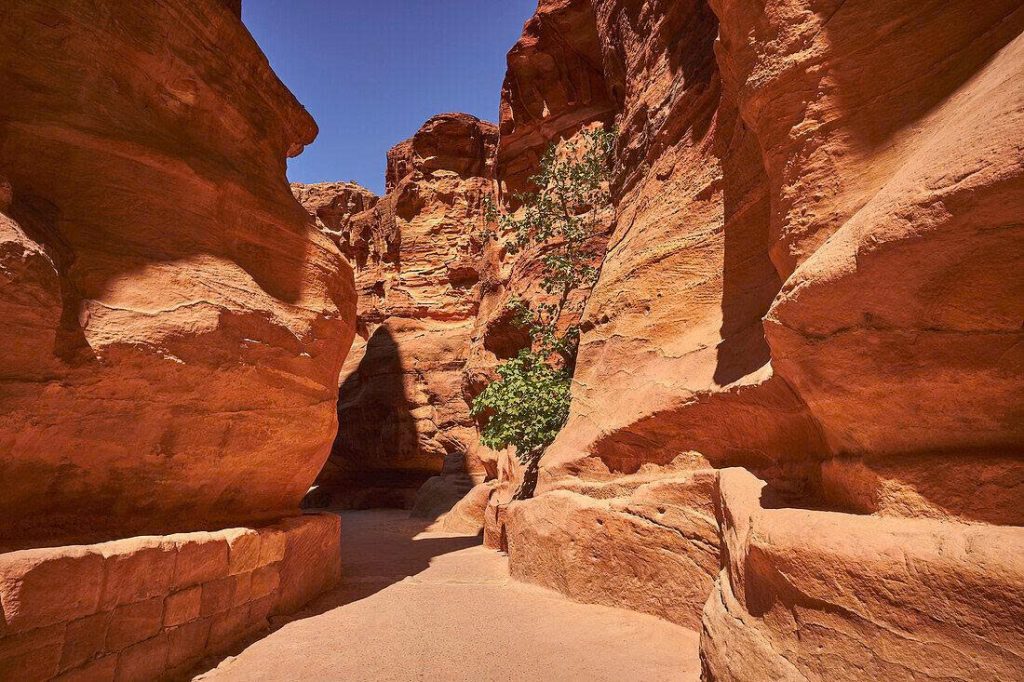
- Wadi Musa and the Siq
The archaeological site of Petra is accessed via Wadi Musa (Valley of Moses), the modern town that hosts the visitor center. The path into Petra itself is through The Siq, a dramatic, narrow canyon (over long) formed by geological fault lines and water erosion, which served as the city’s primary, easily defensible entrance.
- The Geology of Sandstone
The structures are carved directly into massive cliffs of soft sandstone. This stone was easy to sculpt but durable, providing a perfect medium for the Nabataean artists, who blended Hellenistic (Greek) influences with their distinct Arabian style.
2. Planning Your Visit: Tickets, Timing, and Transportation
Mastering the Jordan Pass
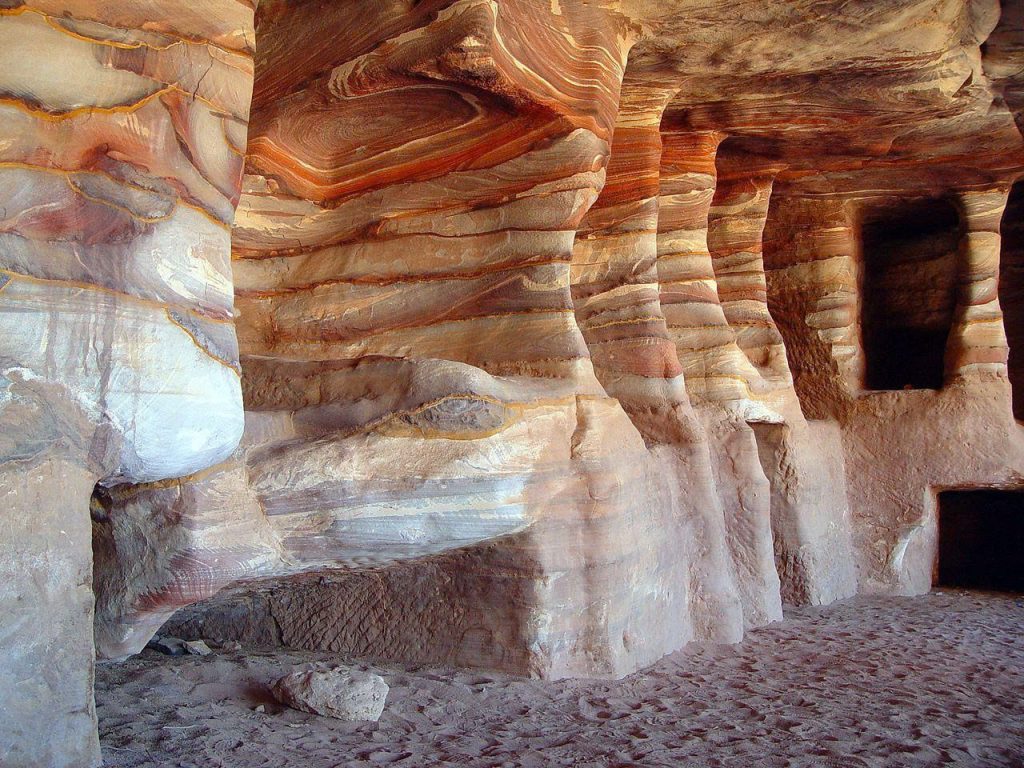
The Jordan Pass is universally recommended as the best way to save money and time when visiting the country.
- What the Jordan Pass Includes
The pass covers the mandatory visa fee for entry into Jordan (provided you stay three nights or more) and grants free entry to over 40 tourist sites, including Petra. Since the Jordan visa fee is high, purchasing the pass is usually the most economical choice for almost all international visitors.
- Petra Entry Options within the Pass
The pass offers three tiers, corresponding to the number of days you plan to visit Petra:
- One-Day Pass: Suitable for quick visits (not recommended).
- Two-Day Pass: The most popular choice, allowing time for both the Main Trail and a major hike like the Monastery.
- Three-Day Pass: Recommended for archaeology enthusiasts who want to explore all major and minor sites.
Best Time to Visit Petra
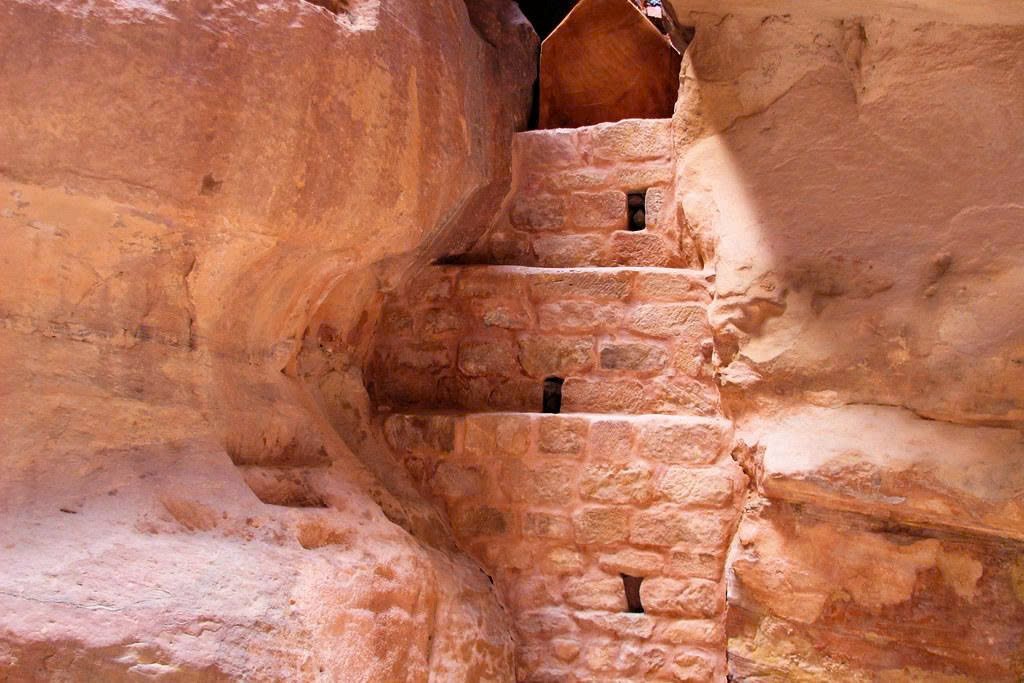
Timing your visit affects the heat, crowds, and photography conditions.
Peak and Shoulder Seasons: The best time to visit is during the shoulder seasons (March to May and September to November). Temperatures are mild and pleasant for hiking, and the daylight hours are long. This is also the peak tourist season, so early booking is essential.
Summer and Winter Considerations
- Summer (June – August): Extremely hot, often exceeding (). Hiking can be dangerous in the middle of the day. Avoid midday trekking.
- Winter (December – February): Cooler temperatures, but occasional rain and even light snow. Shorter daylight hours mean you must start early.
Transportation and Accommodation

Petra is accessed through the modern town of Wadi Musa.
Getting to Petra from Amman
The main points of departure are Amman and Aqaba.
- Bus: The most economical option is the JETT bus from Amman, offering comfortable, direct service to Wadi Musa (approx. 3.5–4 hours).
- Private Taxi/Transfer: The quickest, most flexible option, often shared between travelers to reduce cost.
3. Where to Stay in Wadi Musa
Accommodation options range from budget hostels to luxury hotels. The best location is near the Petra Visitor Center for quick morning access to the site.
Petra Trails and Physical Demands: Petra is vast, covering over. Be prepared for significant walking. The walking is challenging, often on uneven stone steps or sand.
The Main Trail: The Essential Route
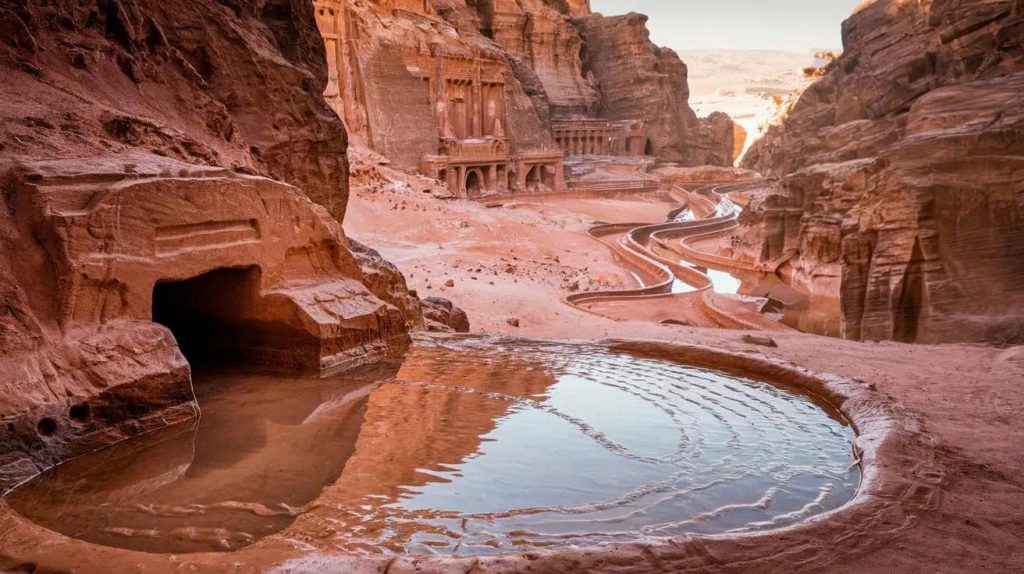
This is the non-negotiable route that every visitor must take.
- Route: Visitor Center The Siq The Treasury Street of Facades Royal Tombs Colonnaded Street Qasr al-Bint.
- Distance: Approximately (5 miles) round trip.
- Time: 3–5 hours, depending on speed and stops.
The Monastery (Ad Deir) Trail: The Ascent
The most famous side trail, offering the second most iconic structure.
- Difficulty: Challenging. Requires climbing around 800 steep, uneven Nabataean steps.
- Distance: Approximately (2.2 miles) one way from the museum.
- Time: 2–3 hours total hiking time (plus viewing time). Start this hike early to avoid midday heat.
The High Place of Sacrifice Trail: The Views
A strenuous but rewarding circular loop that offers incredible panoramic views and ancient ritual sites.
- Difficulty: Strenuous. Involves climbing significant stairs and steep paths.
- Time: 3–4 hours total.
Recommended Itineraries
The Perfect One-Day Petra Itinerary (The Rush)
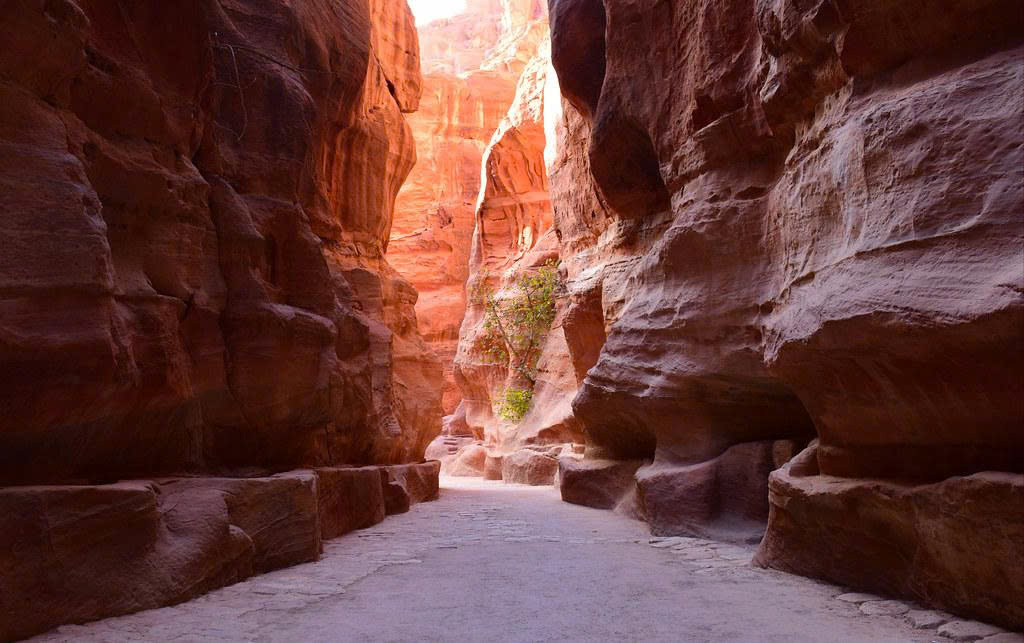
If you have only one day, you must prioritize and be very efficient.
| Time Slot | Activity | Focus |
| 6:00 AM – 7:00 AM | Entrance and The Siq | Be among the first to enter to enjoy the silence and beat the heat. |
| 7:00 AM – 8:00 AM | The Treasury (Al-Khazneh) | Prime time for photography (morning light). |
| 8:00 AM – 1:00 PM | Main Trail Extension | Visit the Street of Facades, Royal Tombs, and the City Center. |
| 1:00 PM – 5:00 PM | The Monastery Hike (Optional) | Use this time for the tough ascent to Ad Deir if energy permits. |
The Ideal Two-Day Petra Itinerary
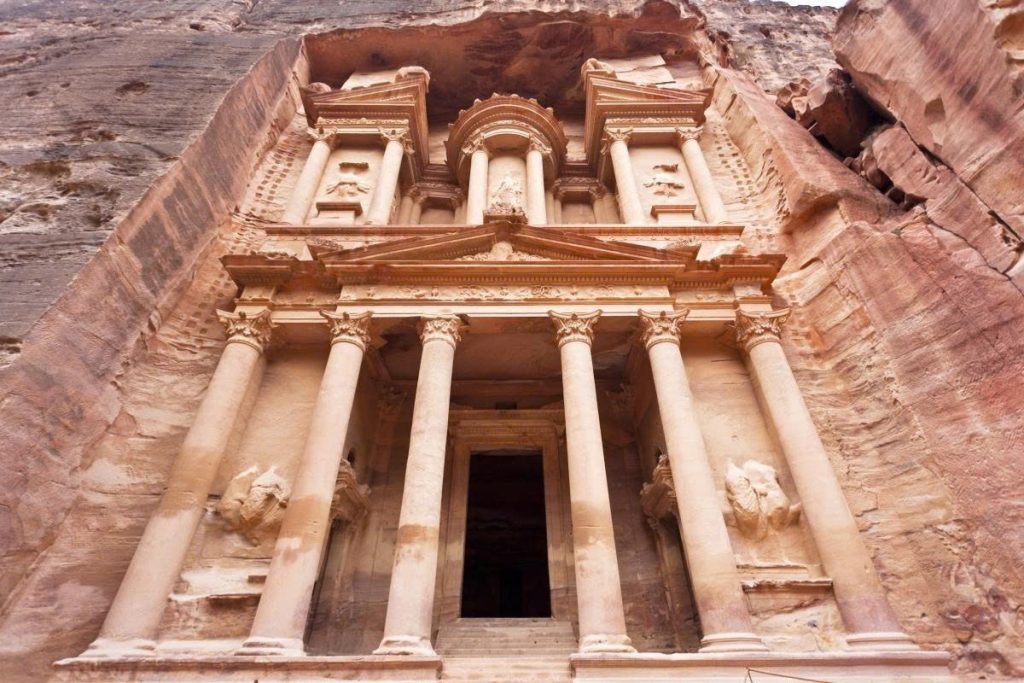
The two-day approach allows you to cover all major sites without rushing and see the Treasury at different times of day.
- Day 1: Focus entirely on the Main Trail and the strenuous Monastery hike.
- Day 2: Focus on the High Place of Sacrifice trail, exploring the Royal Tombs in detail, and visiting the lesser-seen sites like the Byzantine Church and Little Petra.
4. Architectural Wonders and Key Structures
Al-Khazneh: The icon of Petra, famous worldwide and often mistaken for the entrance to the city.
Function and Architecture
Despite its name, Al-Khazneh (meaning “The Treasury”) was almost certainly not a treasury. The prevailing archaeological theory is that it was a mausoleum for a Nabataean king, likely Aretas IV, carved in the 1st century AD. Its facade is a remarkable example of Hellenistic architecture, demonstrating the Nabataeans’ blend of local rock-cutting techniques with classical Greek columns and decorative motifs.
The Treasury Viewpoints
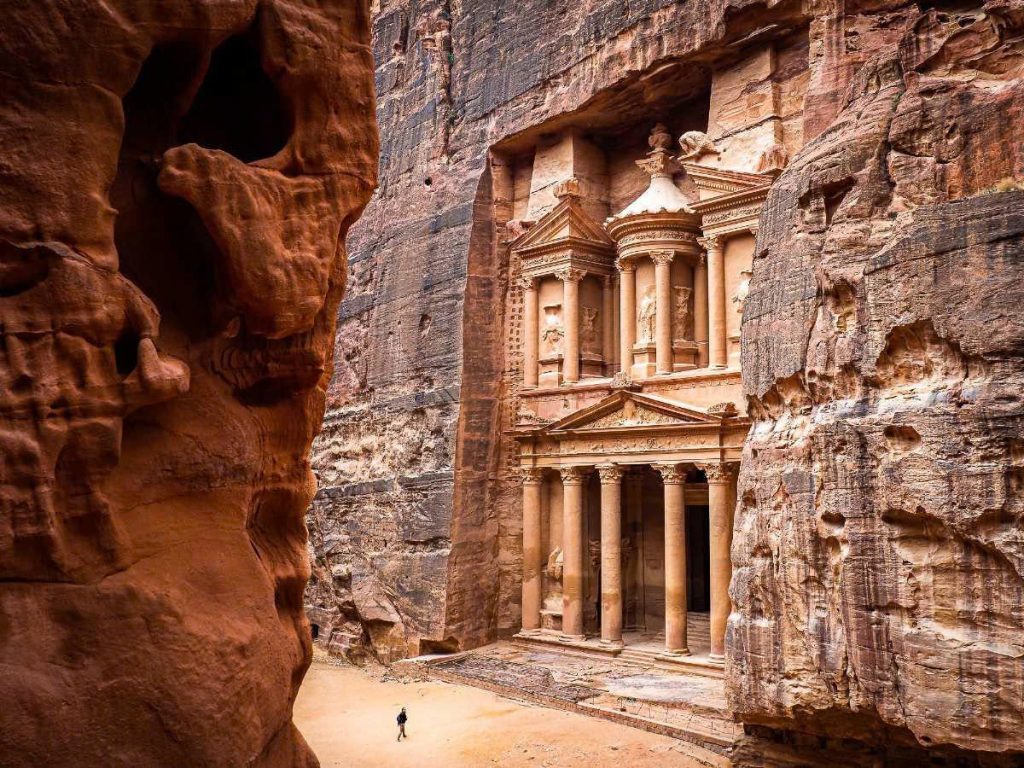
To get the famous shot looking down onto the Treasury, you must hike up one of two approved viewpoints. The shorter, easier viewpoint is often accessed with the help of local Bedouins. The longer viewpoint is part of the Al-Khubtha trail (the back side of the Royal Tombs).
Ad Deir (The Monastery)
Larger and more challenging to reach than the Treasury, the Monastery is often seen as the ultimate reward.
The Monastery is also believed to have been a mausoleum or a temple, but its scale is immense—its façade measures wide by high. It lacks the intense Hellenistic carving of the Treasury but compensates with its sheer size and dramatic mountain setting. Its name, “The Monastery,” derives from crosses carved inside during the Byzantine era.
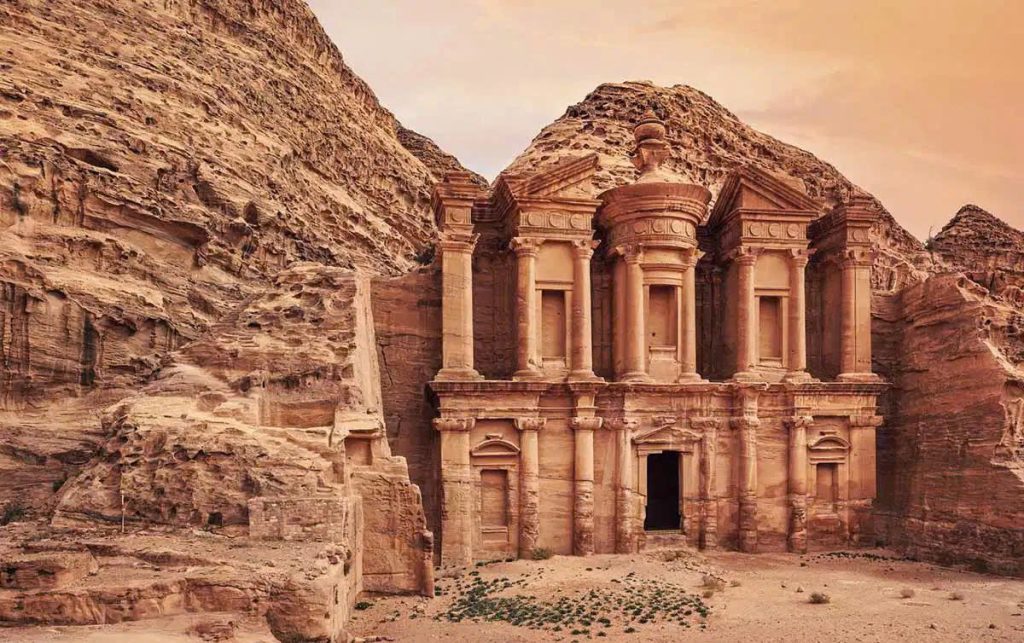
The Views from the Summit: Beyond the Monastery, several short hikes offer breathtaking panoramic views extending over the Wadi Araba desert and into what is now Israel, providing context for Petra’s vast trading reach.
Secondary Structures
The Royal Tombs: Located just past the Street of Facades, these four monumental tombs (Urn Tomb, Silk Tomb, Corinthian Tomb, and Palace Tomb) showcase elaborate carvings and bright sandstone patterns, providing insight into the Nabataean elite’s burial rites.
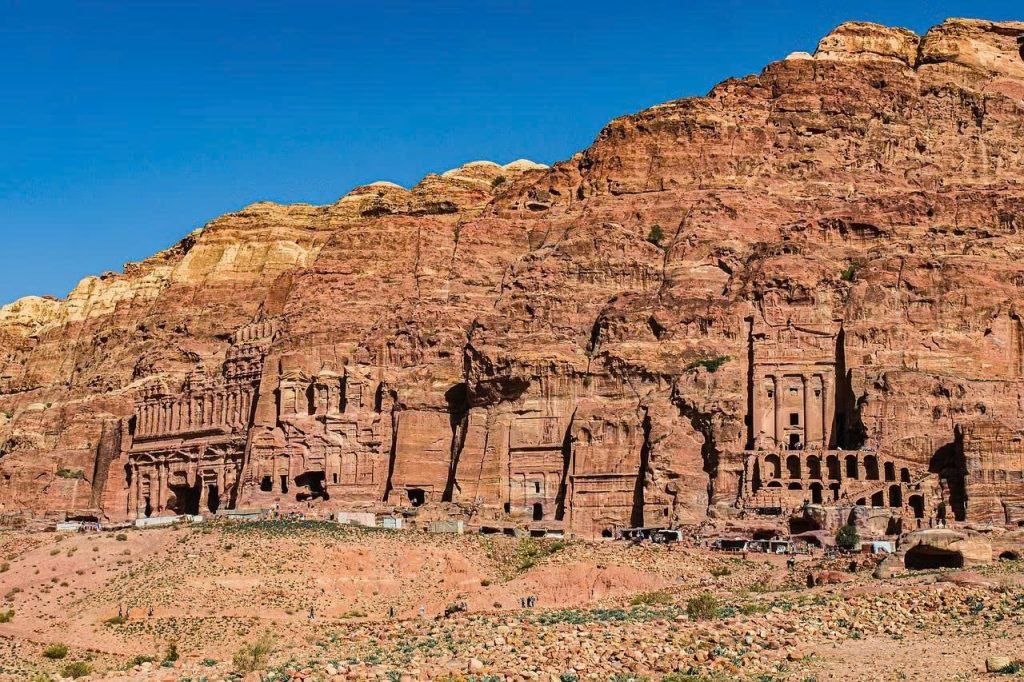
Qasr al-Bint: Unlike the rock-cut structures, the Qasr al-Bint (Palace of the Pharaoh’s Daughter) is a freestanding building. It was one of the few Nabataean temples constructed with carved stone blocks and is believed to have been one of the city’s most important temples.
5: Practical Tips for Petra: Health, Safety, and Culture
Health and Hydration: Hiking in the desert environment demands strict health protocols.
Water and Sun Protection
- Hydration: Carry a minimum of of water per person, especially if hiking the Monastery or High Place of Sacrifice. Water is sold inside but at a premium.
- Sun Protection: Wear a wide-brimmed hat, sunglasses, and high-SPF sunscreen. Start your major hikes before 9:00 AM to avoid the intense midday sun.
Physical Stamina: Petra is accessible to all fitness levels, but completing the major hikes (Monastery and High Place) requires good physical condition and suitable hiking boots. Do not rely on sandals or flip-flops.
Cultural and Ethical Considerations
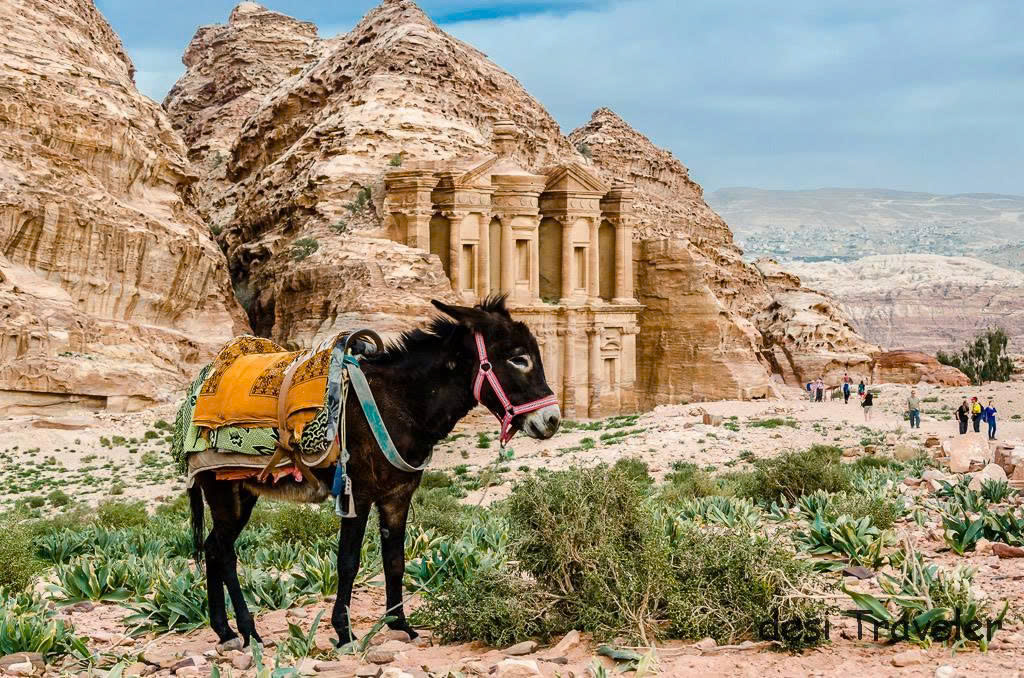
Visiting an ancient site requires respect for the history and the local people.
Interacting with Locals: You will frequently encounter local Bedouins offering donkey, camel, or mule rides, or offering to guide you to viewpoints. While these services are available, be firm but polite if you decline. Always agree on a price beforehand, and ensure any animal handlers are treating their animals ethically.
Petra by Night: The Petra by Night experience (typically Mondays, Wednesdays, and Thursdays) is a magical event where the Siq and the Treasury are lit by hundreds of candles. While beautiful, it is separate from the main entry ticket and primarily an atmospheric, quiet experience, not an archaeological tour.
The journey through the narrow, twisting Siq until the moment The Treasury explodes into view is a moment that remains with every visitor. Petra is the ultimate demonstration of the Nabataean Kingdom’s power—a city carved by hand, fueled by trade, and protected by nature.
RELATED: 7 Wonders of the World: A travel and history guide
This Definitive Petra Travel Guide has equipped you with the necessary expertise on tickets, detailed itineraries, and essential Inca history to master this ancient site. Now, pack your bags, secure your Jordan Pass, and prepare to be utterly captivated by the mesmerizing geology and human achievement of the Rose City of Jordan.

